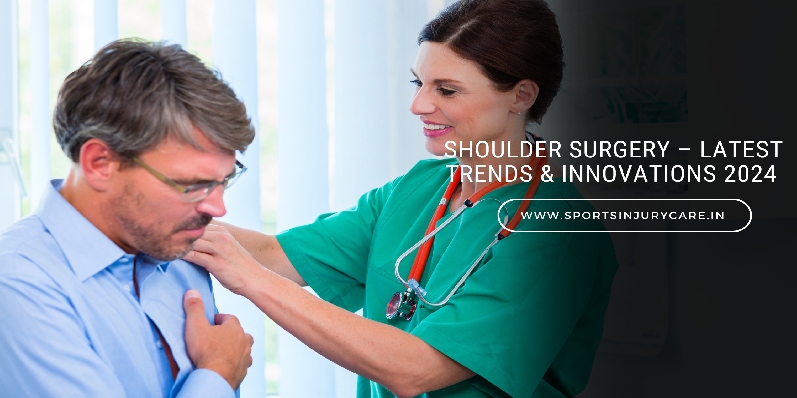
Shoulder Surgery – Latest Trends & Innovations 2024
Did you know that the shoulder joint, though incredibly mobile, is also one of the most unstable joints in the body? This complex ball-and-socket structure allows us to throw, reach, and lift, but its very freedom of movement makes it prone to injuries. Thankfully, the field of shoulder surgery is constantly evolving, offering new hope for athletes and everyday people alike.
Shoulder injuries can be devastating, especially for athletes whose careers depend on their physical prowess. However, many famous sports personalities have undergone successful shoulder surgery and made remarkable comebacks. For instance, baseball legend Stephen Strasburg, after his shoulder surgery, returned to the pitcher's mound with renewed strength and determination. Similarly, NBA star Dwight Howard overcame a shoulder injury to continue his stellar basketball career. These stories are a testament to the advancements in shoulder surgery and the resilience of athletes.
Five Latest Trends in Shoulder Surgery:
Minimally Invasive Techniques: Arthroscopy allows surgeons to perform complex shoulder procedures through small incisions, reducing recovery time and minimizing scarring. This technique is increasingly popular because it offers patients quicker returns to their normal activities.
Regenerative Medicine: Platelet-rich plasma (PRP) and stem cell therapies are gaining traction as treatments for shoulder injuries. These regenerative techniques use the body's own cells to promote healing and reduce inflammation, offering a less invasive option for patients.
Customized Implants: With the help of 3D printing technology, shoulder implants can now be customized to fit individual patients' anatomy. This personalized approach improves the success rates of surgeries and reduces complications.
Enhanced Rehabilitation Protocols: Physical therapy and rehabilitation are critical components of shoulder surgery recovery. Innovative protocols that incorporate advanced exercises and technologies like robotics are helping patients regain strength and mobility faster.
Computer-Assisted Surgery: Surgeons are increasingly using computer-assisted techniques to improve precision during shoulder surgery. This technology enhances accuracy and allows for more detailed planning, resulting in better outcomes for patients.
Innovations that will leave you Impressed:
In addition to the latest trends, several innovations in shoulder surgery are worth noting. These developments offer a glimpse into the future of shoulder treatment and keep both surgeons and patients intrigued:
Robotic-Assisted Surgery: Imagine a robotic arm assisting the surgeon during complex shoulder surgeries! This technology is still in its early stages but holds great promise for enhanced precision and improved outcomes.
Stemless Implants: Traditional shoulder replacements rely on a stem to anchor the implant into the bone. Newer stemless designs aim to preserve more of the patient's natural bone, potentially reducing complications and improving long-term function.
Artificial Intelligence (AI) in Diagnosis: AI technology is being used to analyze shoulder images and detect abnormalities with high accuracy. This innovation helps surgeons diagnose shoulder injuries more quickly and accurately, leading to more effective treatment plans.
Augmented Reality (AR): AR takes things a step further. Surgeons can use AR headsets to overlay real-time anatomical information onto their surgical view, offering a clear roadmap for optimal implant placement.
Conclusion:
Shoulder surgery has come a long way, thanks to technological advancements and innovative techniques. As an arthroscopic surgeon, staying informed about the latest trends and innovations is crucial to providing the best care for my patients. From minimally invasive techniques to robotic-assisted surgery, the field is evolving rapidly, offering new opportunities for improved patient outcomes.
Whether I’m treating athletes or everyday individuals, the future of shoulder surgery looks promising. By embracing these trends and innovations, you can continue to make a significant impact on your patients' lives, helping them regain strength, mobility, and confidence in their shoulders.